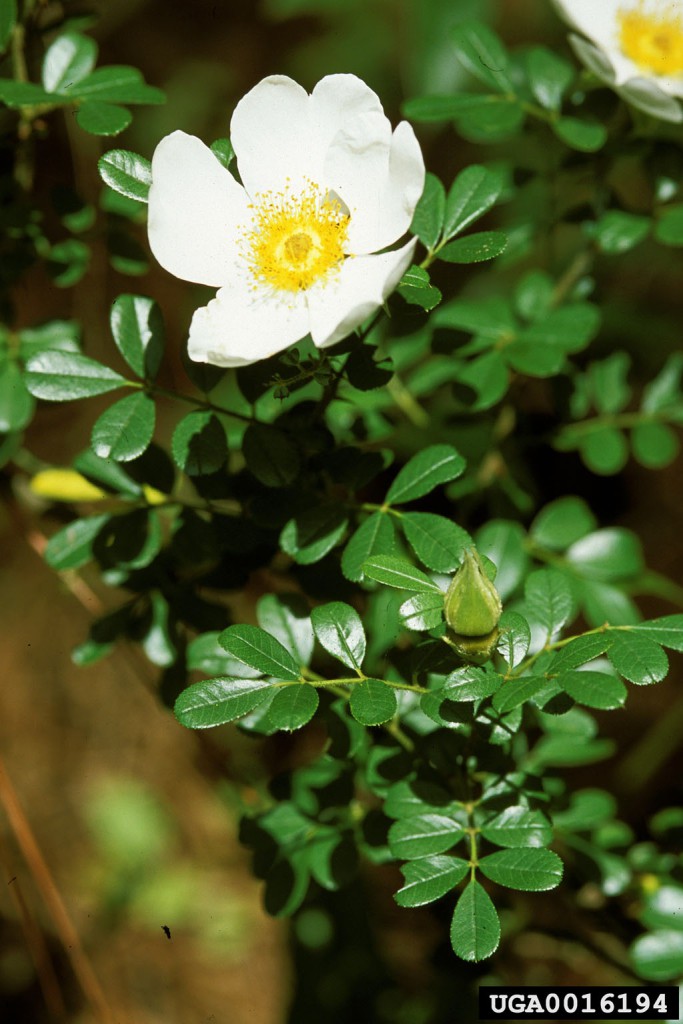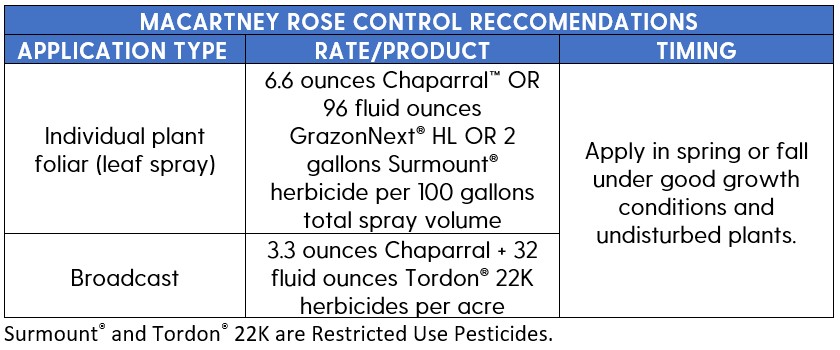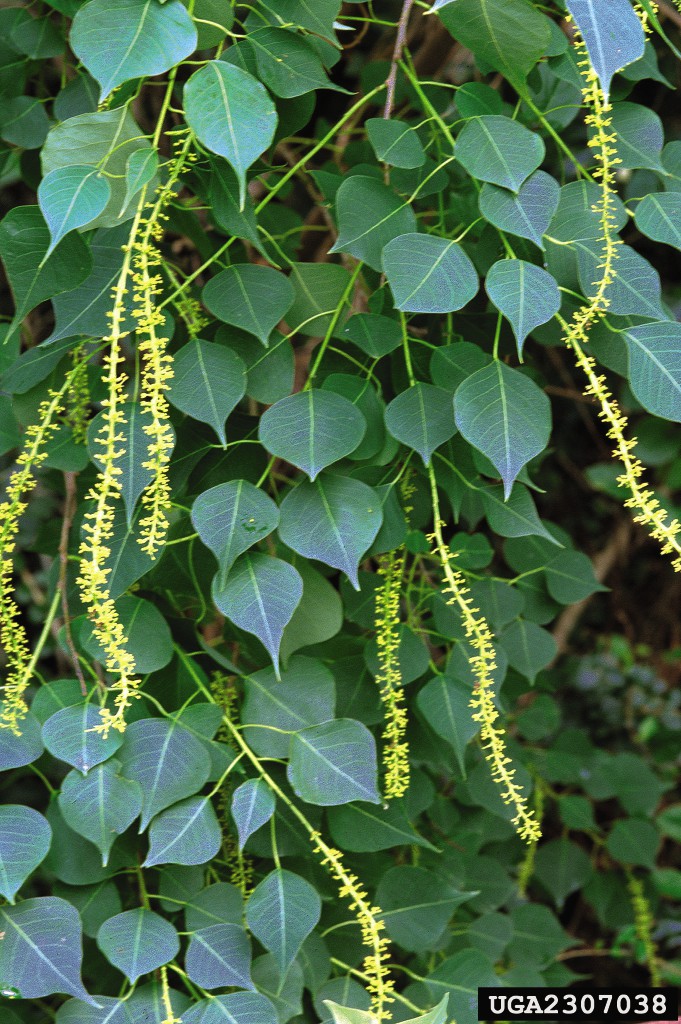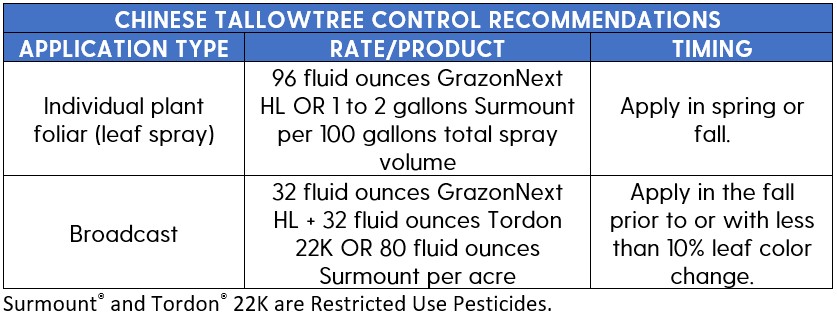Do you struggle with tasajillo, Macartney rose or Chinese tallowtree overtaking your pastures? You’re not alone. These species reduce forage production and hinder livestock management in many pastures across the Southwest.
The good news is individual plant leaf-spray treatments and broadcast brush applications made in the spring and/or fall months can provide effective control. These treatment recommendations and management tips will help you reclaim valuable grazing space.
Tasajillo
Tasajillo can be found growing on its own or in thick clumps. Often, it finds mesquite or other brush species to support its long stems. Hand-pulling can result in reinfestation from the broken plant pieces. A herbicide application provides the most effective control.

Macartney rose

Image credit: James H. Miller, USDA Forest Service, Bugwood.org
This rose forms dense stands that can severely limit pasture forage production and utilization if left uncontrolled. Controlling Macartney rose requires an effective herbicide program, including follow-up and potential re-treatment. Revisit your land regularly to stay ahead of rose hedge sprouts and plants that are missed or only partially controlled by the initial application.

Chinese tallowtree

Image credit: James H. Miller, USDA Forest Service, Bugwood.org
Also known as the “popcorn tree,” because its white seeds resemble popcorn, Chinese tallowtree is highly invasive and adaptable. Control can be tricky, because the tree not only reproduces via seeds but also can grow back from a cut stump or roots left in the ground. Using selective herbicide applications as part of a brush management strategy can improve results.

Before making herbicide applications, evaluate your brush infestations to help decide between individual plant or broadcast treatment methods. It’s easier to control small, scattered brush than large, dense stands — so individual plant treatments are recommended in this case. But for brush densities of more than 200 to 300 plants per acre, broadcast applications will be more cost-effective than individual plant treatments.
Keep in mind the cost and degree of control offered by the different tank mixes will vary, so it’s also important to talk with your Corteva Agriscience Range & Pasture Specialist before you decide on a treatment plan. Learn more at RangeAndPasture.com.
MezaVue®, Surmount® and Tordon® 22K are Restricted Use Pesticides. Chaparral™ and GrazonNext® HL have no grazing or haying restrictions for any class of livestock, including lactating dairy cows, horses (including lactating mares) and meat animals prior to slaughter. Label precautions apply to forage treated with Chaparral or GrazonNext HL and to manure and urine from animals that have consumed treated forage. Chaparral, GrazonNext HL and MezaVue are not registered for sale or use in all states. Consult the label for full details. Contact your state pesticide regulatory agency to determine if a product is registered for sale or use in your state. Always read and follow label directions.








